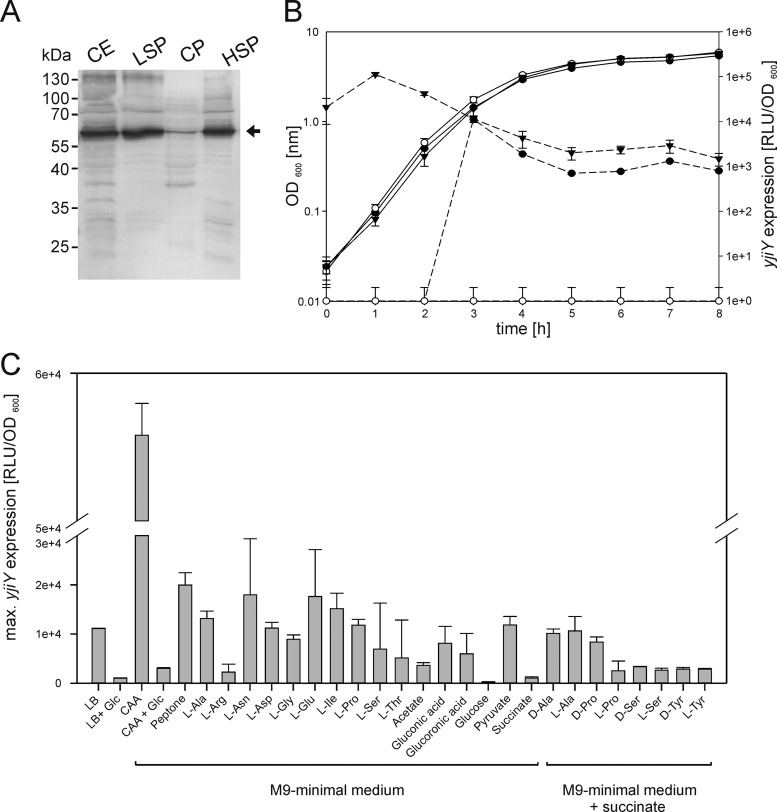Fig 5.
Localization of YjiY-6His and characterization of yjiY expression during growth in various culture media. (A) yjiY-6His was overexpressed in E. coli BL21(DE3). Subsequently, cells were disrupted and fractionated, and the cellular localization of YjiY was analyzed by SDS-PAGE and Western blotting. An equal volume of each fraction was loaded in each lane, and a monoclonal mouse antibody against the 6-His tag was used for detection. YjiY-6His was detected in the crude cell extract (CE), the low-speed pellet (LSP), and the high-speed pellet (HSP), but not in the cytoplasmic fraction (CP). (B) A luciferase-based reporter assay was used to determine the pattern of yjiY expression. E. coli MG1655 (●) and E. coli MG2 (ΔyehUT) (○) were transformed with pBBR yjiY-lux and were grown in LB medium. In addition, these reporter strains contained plasmid pBAD24 or pBAD24-yehUT. The latter was used for complementation of strain E. coli MG2 (▼). Bacteria were cultivated under aerobic conditions, and growth (solid lines) and the activity of the reporter enzyme luciferase (dashed lines) were determined. The luciferase activity (expressed as relative light units divided by the optical density of the culture [RLU/OD600]) served as a measure of yjiY expression. (C) Influence of medium composition and supplements on yjiY expression, as measured with the reporter strain E. coli MG1655/pBBR yjiY-lux. Bacteria were cultivated under aerobic conditions in complex medium (LB) or M9 minimal medium with the indicated carbon sources (20 mM amino acids, 0.5% [wt/vol] all other carbon sources; CAA, Casamino Acids). Glucose (Glc) (0.5%, wt/vol) was added where indicated. Bacteria were also grown in M9 minimal medium with succinate as a carbon source, supplemented with the indicated amino acids (20 mM). Growth and luciferase activity were monitored continuously. The maximal luciferase activity normalized to an optical density of 1 (RLU/OD600) was used as a measure of the degree of induction of yjiY. All experiments were performed at least three times, and the error bars indicate the standard deviations of the means.

